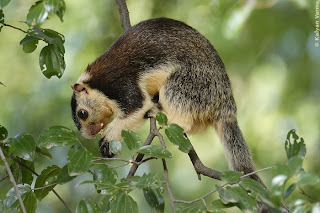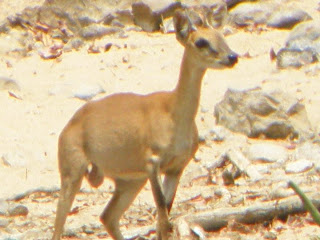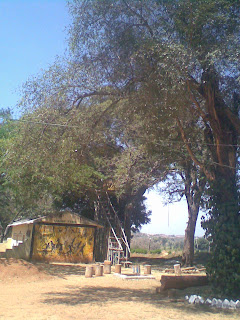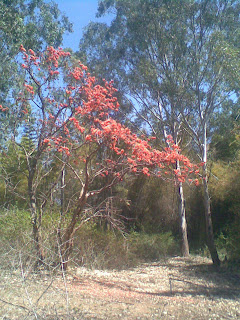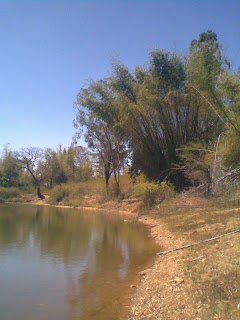A couple of months back I had registered with KANS(Kenneth Anderson Nature Society) as a volunteer. Never thought they’ll respond but they did, two months later. Got a mail asking me to come for a ground survey of Urigam, a place in the Melagiri range of the Hosur forest division. So off I went on a friday evening (left early from office), got picked up by a couple of guys who were going there by car. Reached Ancheti forest guest house by 8 in the night.
After exchanging pleasantries with the rest of the group(14 volunteers), we were briefed on our itinerary for the next day. We were divided into teams of two and would be accompanied by a forest guard during our hike through the forest. My teammate was a girl who was working with Infosys. We were given data sheets on which we had to record the data pertaining to direct and indirect evidences (direct-sighting or hearing animals; indirect-pug/hoof marks, scat/droppings etc.), covers to collect samples(in case of scat/droppings) and GPS(Global Positioning System) to record the exact spot where we found evidences. We had to collect these data while walking along a pre-decided trail. So everything set, we guys finally crashed for the day at almost 12 in the night, on the veranda, chivalrously offering the sole room to the two ladies in the group. I did have second thoughts about giving away the room as it started getting inexorably cold a few hours into the sleep.
Next morning saw us awake by 4:30 and getting ready quickly to set off from the guest house to our respective drop points. My team reached our start point finally at 6:30. We started with the forest guard assigned to us. The guard told me that our trek would be around 12 kilometers which I think was true coz we reached our extraction point only by 12:30 and it did seem like a good hike. Just at the start of our trail I saw a Crested Serpent Eagle, to me it was like a good omen, which would make my hike eventful. Spirits up, we kept moving forward. The first indirect evidences were hoof marks of Wild pigs(Sus scrofa) and Elephant(Elephas maximus) dung at an almost dry waterhole. Then we came across scat of Civet(unsure of the species) which I had to collect. Whoa! what am I talking about, pick up shit?! Yup, thats exactly what I had to do and I did it without a second thought; but then again ensured that I did it in the most hygienic way possible. I put my hand into one of the plastic covers they had given for sample collection and picked up the scat and then turned the cover inside out which made sure that I did not have direct contact with the scat but at the same time it ended up in the cover. After enthusiastically collecting this great piece of evidence, I realized the lack of a bag to carry it. So off went the cover full of scat into my army green cargo’s knee pocket. Then took out the GPS, took a reading and recorded the observations on the data sheet. Later we found a lot of Elephant dung and scat of Wild Dogs/Dhole(Cuon alpinus). The Wild Dog’s scats were quickly collected. Wild dog’s scat is identifiable by the presence of hair(hair of its unfortunate prey). Then we also came across droppings of Bonnet Macaque(Macaca radiata) and Sloth Bear(Melursus ursinus). We also came across a strange scat which the guard claimed was of Wild dogs but I had doubts as it was completely white and without hair, which resembled that of a Striped Hyena(Hyaena hyaena). Anyway to clear doubts, this too was appropriately collected and recorded. During our hike we also found tracks of Sambar(Cervus unicolor), Spotted Deer(Axis axis) and also Sloth Bear. These were photographed like those of the wild pigs. Direct sightings of mammals during the entire hike consisted of only two- Hanuman Langur(Semnopithecus entellus), a troop of which were seen across a valley on another hill and a Spotted Deer doe. Other than mammals quite a few birds were also spotted. Happy with the data sheet being filled reasonably, we reached our extraction point to meet organizers. I excitedly told them about our experiences as to what we had seen and collected. Later during the day we met the other teams and discussed our findings. Some teams had found Leopard(Panthera pardus) scats and pug marks while others had seen Jackals(Canis aureus).
For that night, we were to camp at an Anti-Poaching Camp at Uganiyam, near the Cauvery river. On the other side of the river was Karnataka. The Karnataka side seemed better forested and the tell tale evidences of humans were less as it was a sanctuary whereas the Tamil Nadu side was only a reserve forest. The river bank in one area was littered with plastic left behind by Pilgrims who had come to a temple there for a festival; the sight was heart-breaking! Anyway did some light birding in the vicinity for a couple of hours while waiting for the other teams to arrive. During which time a couple of people went on a coracle ride and spotted the Smooth River Otters(Lutrogale perspicillata)!! After everyone got back, we settled down at the Anti-Poaching camp at Uganiyam. Here we chatted and cracked jokes and spent our time till around 12 in the night. Then some of us slept inside the camp building(me included), while others slept in their respective vehicles and some others, outdoors.
Early next day, I got up and did some birding with a guy who was doing project(MSc project) on birds. While birding we also saw a group of 4 Wild Pigs bounding away after hearing us. Soon after the birding, I handed over the data sheets, photographs and the samples to the organizers. I explained in detail whatever I had seen and collected. That brought my survey to a close. I was happy, elated and felt like I was in the air because I felt I had accomplished something; I had finished a task I was entrusted with, a task that I was more than happy undertaking…
Check out this article on Cauvery forests- http://www.flonnet.com/fl2626/stories/20100101262606400.htm
Arun also blogs at Idle Mind.











